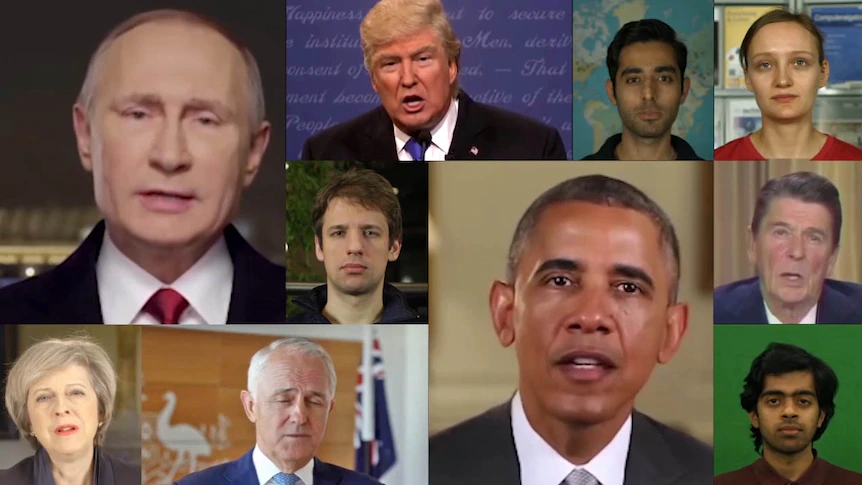With the advancement of video editing tools, it is now simple to swap out a person’s face for another and change their facial expressions. There are techniques that can identify faces that have been switched with a fair amount of accuracy. However, recognizing faces where just the expressions have altered is more challenging, and there is currently no proven method. Then how to detect Deepfake videos? We will show you in this article.
A flurry of recent research has developed a number of deepfake video detection (DVD) techniques. Some of these technologies like Intel Fake detector assert that, in certain circumstances, detection accuracy can exceed 99 percent, but such accuracy claims need to be taken with a grain of salt. The degree of compression, image resolution, and the make-up of the test set all have an impact on how difficult it is to spot video tampering. Let’s explore how to detect Deepfake videos in detail in this article.
How to detect Deepfake videos? Detecting deepfake videos is not easy. However, you can use an Intel Fake detector to detect a deepfake easily. You can also detect deepfake videos manually.
Go through the article and learn how to detect Deepfake videos step-by-step.
How To Detect Deepfake Videos?
It’s getting harder and harder to tell the difference between deepfakes and genuine footage as this technology develops, especially if a deepfake video is well-made. However, since an AI’s ability to identify deepfakes is now improbable due to its inferior accuracy to that of the human eye, it is still a long way off.
However, there are still a few methods you may use to determine if a video you believe to be a deepfake is genuine or not. The following eight recommendations from MIT Media Lab researchers can aid this process: You should pay careful consideration to a subject’s:
Face: When it comes to lighting or when a 2D image has been turned to 3D, deepfakes nearly always involve distortions or transformations.
Cheeks and forehead: Does the skin on your cheeks and forehead appear artificial? Are there textural irregularities?
Eyes and eyebrows: Are the shadows around the brows and under-eye circles realistic-looking? What shade of eyes does the subject have?
Glasses: Do the glare, reflection, and illumination appear realistic?
Facial hair: If you have facial hair—or none at all—does it move properly?
Facial moles: Are facial moles realistic in their placements and movements?
Blinking: Does the blinking of the eyes occur naturally? Do they have bugs?
Lips: Do the lips appear to be a part of that face?
How To Detect Deepfake Videos With Intel Fake Detector?
The FakeCatcher detector, created by Demir in association with Umur Ciftci of the State University of New York in Binghamton, is used by Intel’s real-time platform. It runs on a server and connects via a web-based platform using Intel hardware and software. The optimal FakeCatcher architecture is created by an orchestra of specialized software tools. Teams ran AI models for face and landmark identification techniques using OpenVinoTM. Inference blocks were improved using Intel Deep Learning Boost as well as Intel Advanced Vector Extensions 512, whilst also media blocks were streamlined using Intel Advanced Vector Extensions 2. Machine learning blocks were improved using Intel Integrated Performance Primitives, a multi-threaded software library, and OpenCV. In order to develop an integrated software stack for the Intel Xeon Scalable processor family, teams also relied on the Open Visual Cloud initiative. On 3rd Gen Intel Xeon Scalable processors, the real-time detection platform can execute up to 72 distinct detection streams concurrently.
Wrapping Up
Hope, this article helped you to find the answer to how to detect Deepfake videos. Go through the methods discussed in this article and try to detect deepfake videos on your own. Also, give Intel Fake detector a try. Let us know your experience while detecting deepfake videos and images scattered on the internet. Follow Deasilex for more updates on Technologies.
Frequently Asked Questions
Q1. Can Facial Recognition Detect Deepfake?
According to a recent study by the Penn State College of Information Sciences and Technology, deepfake-based assaults pose a serious threat to users and applications of face recognition technology that use a certain user-detection technique.
Q2. How To Detect Deepfakes Using AI?
FakeCatcher uses PPG to record blood flow signals from all over a video subject’s face. After the technology converts the signals into spatiotemporal maps, deep learning algorithms match them to human PPG activity to decide whether the object in the video is real or not.
Q3. What Are Signs Of Deepfakes?
If you notice facial morphing or graphic stitching, or if someone’s expression doesn’t convey the emotion that should accompany what they’re saying, the video might be a deepfake. If someone’s face and nose are pointed in different directions, you should be cautious of videos that seem authentic.
Q4. Can People Detect Deepfakes?
The EEG test reveals activity taking place on the surface layer of the brain. The neural activity revealed that deepfakes could be recognized 54 percent of the time by study participants’ brains, whereas deepfakes could only be recognized verbally 37 percent of the time.
Q5. Is Deepfake A Crime?
The public’s confidence in the video is threatened by deepfake media (deepfakes), which also presents difficulties for law enforcement in terms of new forms of investigations, evidence management, and trials. Deepfake media have already been utilized to commit crimes like fraud and harassment, and this trend is certain to continue.

